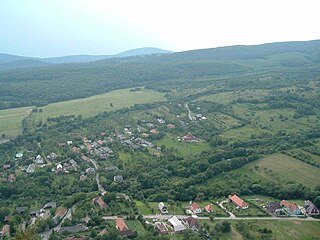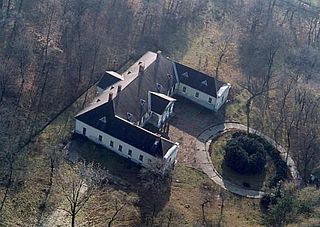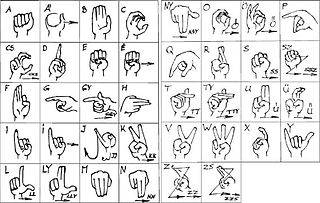
Hungary is a landlocked country in Central Europe. Spanning 93,030 square kilometres (35,920 sq mi) of the Carpathian Basin, it is bordered by Slovakia to the north, Ukraine to the northeast, Romania to the east and southeast, Serbia to the south, Croatia and Slovenia to the southwest, and Austria to the west. Hungary has a population of 9.5 million, mostly ethnic Hungarians and a significant Romani minority. Hungarian, a language belonging to the Ugric branch of the Uralic language family, is the official language, and Budapest is the country's capital and largest city.

The Hungary national football team represents Hungary in men's international football, and is controlled by the Hungarian Football Federation. The team has made nine appearances in the FIFA World Cup, and five in the UEFA European Championship. Hungary plays their home matches at the Puskás Aréna, in Budapest, which opened in November 2019.

Unicum is a Hungarian herbal liqueur or bitters, drunk as a digestif and apéritif. The liqueur was created in 1790 and is today produced by Zwack according to a secret formula of more than forty herbs; the drink is aged in oak casks. During communism in Hungary, the Zwack family lived in exile in New York City and Chicago, and Unicum in Hungary was produced using a different formula. Before moving to the United States, János Zwack had entrusted a family friend in Milan with the production of Unicum based on the original recipe. After the fall of communism, Péter Zwack returned to Hungary and resumed production of the original Unicum.

The Slovak Soviet Republic was a short-lived Communist state in southeast Slovakia in existence from 16 June 1919 to 7 July 1919. Its capital city was Prešov, and it was established and headed by Czech journalist Antonín Janoušek. It was the fourth communist state created in history.
Hungarian Sign Language is the sign language of deaf people in Hungary. There is historical evidence that Hungarian and Austrian Sign Language are related, but Bickford (2005) found that Hungarian, Slovak, and Czech Sign formed a cluster with Romanian, Bulgarian, and Polish Sign rather than with Austrian. Bickford also noted that there are about seven dialects of Hungarian Sign Language, with the variation connected to the residential deaf school where it is taught.
The Workers' Party of Hungary 2006 – European Left, shortly European Left is a political party in Hungary. It was created in mid-November 2005 from the internal opposition of the Hungarian Workers' Party. Its leader is János Fratanolo.

The Northern Great Plain is a statistical region of Hungary. It is part of the Great Plain and North region. The Northern Great Plain includes the counties of Hajdú-Bihar, Jász-Nagykun-Szolnok, and Szabolcs-Szatmár-Bereg, with a total area of 17,749 km2 (6,853 sq mi) and a population of around 1.5 million. The region is in the eastern part of Hungary. It borders northern Hungary to the north, Ukraine to the north-east, Romania to the south-east, the Southern Great Plain region of Hungary to the south, and central Hungary to the west. The region's centre, and capital city is Debrecen, the second largest city within Hungary.
Szemere is a village in Borsod-Abaúj-Zemplén County, Hungary.

Bodrogkeresztúr is a village in Borsod-Abaúj-Zemplén county, Hungary.

Bódvaszilas is a village in Borsod-Abaúj-Zemplén county, Hungary.
Gömörszőlős is a village in Borsod-Abaúj-Zemplén county, Hungary.

Füzér is a village in Borsod-Abaúj-Zemplén county, Hungary. It contains the northernmost point of Hungary. The castle of Füzér is located in this village.
The Battle of Saint Gotthard was fought on 13 December 1705 between a Hungarian (Kuruc) army led by János Bottyán and an Austrian-Croatian-Serbian combined army under the command of Hannibal von Heister. The battle took place at Szentgotthárd and Nagyfalva (Mogersdorf), near the Austro-Hungarian border. The result of the battle was a Hungarian victory.
Novajidrány is a country village in northern Hungary.

Tornanádaska is a village in the Edelényi kistérség, Borsod-Abaúj-Zemplén County, Hungary.

The Hungarian Olympic Committee is the National Olympic Committee representing Hungary.

Tibolddaróc is a village in Borsod-Abaúj-Zemplén County in northeastern Hungary.
The braille alphabet used to write Hungarian is based on the international norm for the 27 basic letters of the Latin script. However, the letters for q and z have been replaced, to increase the symmetry of the accented letters of the Hungarian alphabet, which are largely innovative to Hungarian braille.

Sour cherry soup is a slightly sweet soup made with sour cream, sugar and whole fresh sour cherries, and served chilled. Originating in Hungarian cuisine, this soup is a summer delicacy in several European cuisines.

The Hungarian Manual Alphabet is used for fingerspelling in Hungarian Sign Language. The most common is the one-handed alphabet near the face, but an adapted LSF-style alphabet is sometimes employed.














